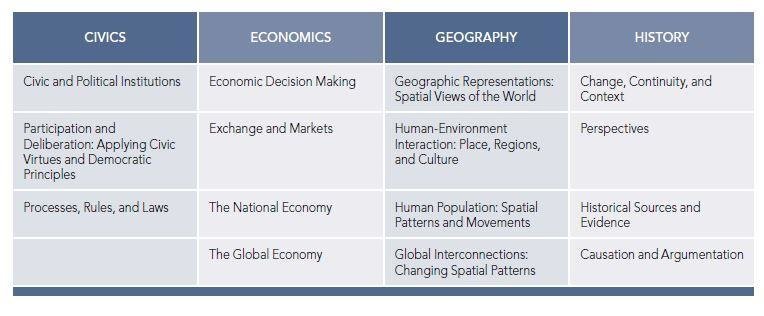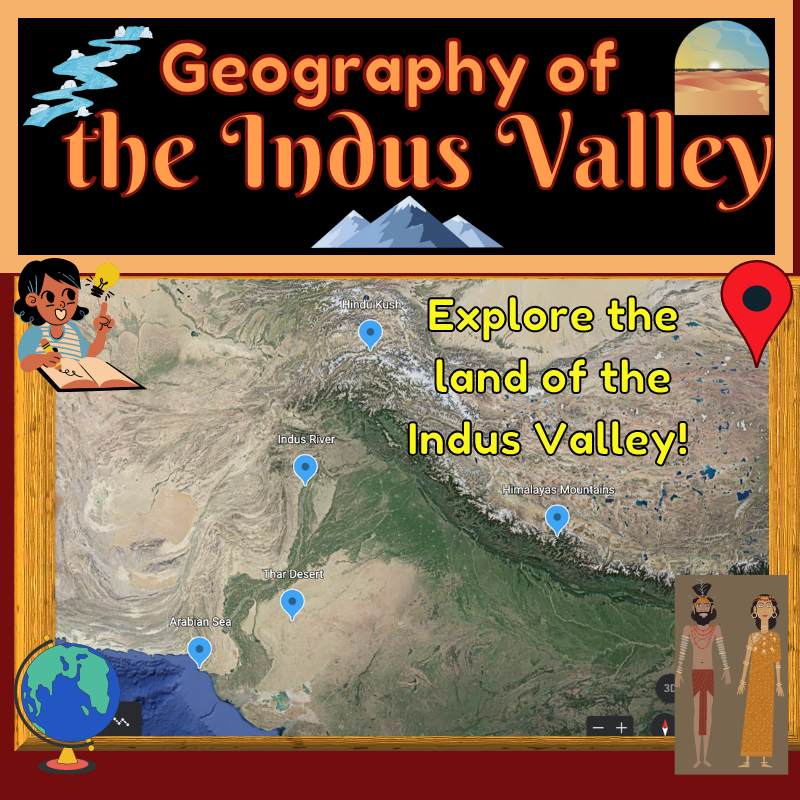
Resources and ideas for History /Social Studies teachers. Let Clio help inspire your students! Also, products for your work and home.
Today’s students need to see how the past is important to them in today’s terms. I have been in the classroom for more than 17 years. Making global connections through inquiry-based learning is what you will find here.
My mission is to create material and sources that will help educators spark interest in the past and to see how our human journey has modern-day significance.
GRAPES Review of Civilizations Using Bloom's Taxonomy
Teachers, are you looking for an end of the year review? Maybe some of your students are asking you for last minute chances to make up some missing work?
This lesson is perfect for end of the year, or end of unit review. Your students can choose ANY civilization to review. They can also choose ANY acronym from GRAPES to concentrate on. Or maybe one of your students need more support on a particular civilization that they struggled with this year.
This activity is great for that. Students will use GRAPES to review a civilization. Maybe you already assessed them on a civilization? Then, this activity can help your students concentrate on only one acronym of GRAPES. That way, they can narrow their focus.
Social Studies curriculum development should consider the C3 Framework. Students start by developing a compelling question. Click on the picture below to visit the National Council for Social Studies website.
Ancient Chinese Dynasties Virtual Museum Project using GRAPES
Students will use GRAPES to explore an ancient dynasty of their choice. They will research their dynasty by answering essential questions relating to each acronym of GRAPES. Then, they will create a digital museum containing artifacts from their dynasty. This project is a great way to wrap up their study of ancient China. Thus, they will be able to show their knowledge in a creative and meaningful way.
Chinese dynasties:
Shang
Zhou
Qin
Han
GOOGLE EARTH™ Geography of Ancient China
Looking for a way to connect Geography and ancient China in a fun and meaningful way? Geography is arguably the most important characteristic of how a civilization has existed and has been able to survive. Students should recognize the importance of the physical landscape and how a society adapts and flourish. The essential question is What does the natural environment of China and surrounding areas tell us about how the people lived?
This activity will allow students to explore five geographical features of ancient Egypt. The five features are:
The Huang He River
The Yangtze River
The Himalaya Mountains
The Tibetan Plateau
The Taklamakan Desert
The Gobi Desert
Virtual Museum Project using GRAPES for Middle School History and Social Studies
Teachers want to make real-world connections to their lessons. This easy to use project is just that. The students assume the role of a Museum Curator. They learn what a curator does and what museums are doing to gather interest to their site. Students conduct research on a topic, using the GRAPES acronym (Geography, Religion, Achievements, Politics, Economy, and Social Structure) or with other topics specific to their unit of study. This is perfect for teachers who need something that extends beyond one or two days. Most of the work can also be done outside the classroom, or when the students finish with their main classwork.
GOOGLE EARTH™ Geography of Ancient Egypt
Looking for a way to connect Geography and ancient Egypt in a fun and meaningful way? Geography is arguably the most important characteristic of how a civilization has existed and has been able to survive. Students should recognize the importance of the physical landscape and how a society adapts and flourish. The essential question is How did the natural environment affect the way ancient Egyptians lived?
This activity will allow students to explore five geographical features of ancient Egypt. The five features are:The Red Sea, The Nile River, The Nile Delta, The Mediterranean Sea, and The Sahara Desert
Hammurabi's Code for Google Slides™ DBQ using SHEG
What can we learn about Babylonia from Hammurabi's Code? This is the main question that the students will attempt to answer using these Google Slides. This activity has been adapted from the SHEG Stanford History Education Group resource. You can use this as a stand-alone activity, or along with the SHEG resource documents.
Students will take on the role of historians. They will analyze selected sources from Hammurabi's Code. They will respond to some questions that will help give clues about life in Babylonia.
The slides include an introduction to Hammurabi, a map of Babylonia, and a description of the code of laws.
Discovering Mesopotamia Through Artifacts for Middle School Ancient History
Looking for a way to connect the modern day to the Mesopotamian civilization? Many advancements were made during ancient history. We are still benefiting from the inventions made by this society. This activity will allow students to explore five inventions by the ancient Mesopotamian civilization. The five artifacts are:
Mass-produced pottery
Plow
Wheel
Writing
Number System
GOOGLE EARTH™ Geography of the Indus Valley Civilization
Looking for a way to connect Geography and the Indus Valley Civilization in a fun and meaningful way? Geography is arguably the most important characteristic of how a civilization has existed and has been able to survive. Students should recognize the importance of the physical landscape and how a society adapts and flourish. The essential question is What does the natural environment of the Indus River Valley and surrounding areas tell us about how the people lived?. This is a great way to cover the 'Geography' part of G.R.A.P.E.S.
This activity will allow students to explore five geographical features of the Indus Valley Civilization. The five features are: The Indus River, The Himalaya Mountains, The Hindu Kush Mountains, The Thar Desert, and The Arabian Sea
Urban Planning: Indus Valley Civilization, Modern Cities, and Sustainability
This is a wonderful activity to make connections to one of the newest discoveries of an ancient civilization: the Indus Valley Civilization. Around 100 years ago, this culture began to be excavated on a major scale. This is a wonderful time for educators to explore this society. The written language has yet to be completely deciphered. So, we have to rely on what they have left behind. How to inspire the students? Have them take on the role of an Urban Planner….
Digital Timeline using SUTORI
This digital timeline activity is a fun and creative way for your students to practice organizing events in chronological order. They will create their timelines based on their own lives and also world events that are important to them. Using the free website Sutori, they will design their timelines and enhance them by adding multimedia. They will add images, videos, and other things. It is super easy to use! There is a tutorial on Sutori's website.
This is the PERFECT way for students to practice organizing events, providing a rationale for their selection of events along with a short description of each, and collaborate with others. They will use their research skills, choose an event that has a global impact, and provide a claim on why their event is important.
Current events for Google Slides™️. Perfect for Middle School and High School students
Students have a lot on their minds and they have a lot to say. This activity is great because it gives them ownership of their work. There are lots of things happening around the world and kids need to see that humans are trying to change the world in real time.
Along with research and collaboration skills, students can see share their event choices and explain why these events affect our world. I usually open it to about any topic they want. As long as it has a significant impact on international news. I know this can be arguable and subjective, but that is where the teacher must set their own boundaries. Normally, my students know that they must find some deep and impactful, not anything silly.
Sign up to be the first to know about our articles and products.













